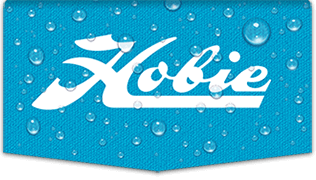|
Congratulations on your new boat! The Hobie 18 is a great boat, but not without it's challenges to get used to. Coming from a monohull, there are a few techniques that will be a little different. Tacking, for one, is a little more difficult on a catamaran because they don't have a lot of momentum to carry them through the tack. In order to get through the tack more quickly, racers have adopted a "roll tack" technique that helps the boat through the wind, by moving weight to the aft windward corner early in the tack, and then crossing to the forward crossbar on the new windward side just slightly after the boat crosses the wind. A book I would recommend for the nuances of sailing catamarans is "Catamaran Racing for the 90's." I thought it was well written for a sailor familiar with the basics, but new to catamarans. It also has a chapter specific to rigging and sailing the Hobie 18. Also, there is a booklet entitled "The Hobie 18 Performance Manual" which gives some great tips as to how to rig and sail the boat, including exactly what you're looking for, a guide to mast rake, mast rotation, diamond wire tension, etc, which can be bought from Murray's Sports.
With regards to your specific questions:
Upwind I tend to put my jib fairlead about 2/3rds the way back from the front and sheet it fairly tight, watching the telltales to keep them flowing and being careful not to close the slot between the main and the jib. The main of course is sheeted fairly tight. Best angle of attack seems to be with an apparent wind at around 35 degrees off the bow.
Downwind is tricky on a catamaran, because you want to sail a broad reach (it's faster than a run). For downwind sailing, I move my jib fairlead all the way forward, sheet the jib loose to leave an open slot, and try to keep the leeward telltale flowing (the windward one never flows well downwind). The main traveller is let out to about 6" from the inboard side of the leeward hull, or about in line with the hiking strap, and the mainsheet is almost loose enough to let the mainsail rest against the shroud. Again, watch the slot. Apparent wind should be exactly 90 degrees. Just like upwind sailing, there is a "groove" for downwind sailing that you want to try to maintain, by sailing a slight "S" course.
The "wishbone" you're asking about is the mast rotator. There should be a line going from an eye on the side of the boom, through the end of the rotator and then back through a jam cleat on the top of the boom. Pull the line tighter to allow less mast rotation (i.e. mast more fore-aft oriented), or let it out for more rotation. Less rotation = less mast bend, more sail shape & more power, more rotation = more mast bend, a flatter sail and less power. Generally, the idea is that the mast should be allowed to rotate about 70 degrees off CL (the rotator/wishbone should point at the leeward shroud) when sailing upwind and 90 degrees off downind, in order to give the mast & mainsail a smooth entry profile to the wind. In heavier winds, rotate more, in lighter winds, rotate less. If your diamond wires are looser, the rotation has more of an effect, and if they are tighter it has less of an effect (because they stiffen the mast on it's minor axis).
_________________ Mike  '79 H18 standard ' Rocketman II' sail #14921 RIP '78 H18 ( unnamed) sail #14921'08 H16 sail #114312'97 H21SC sail #238
|






